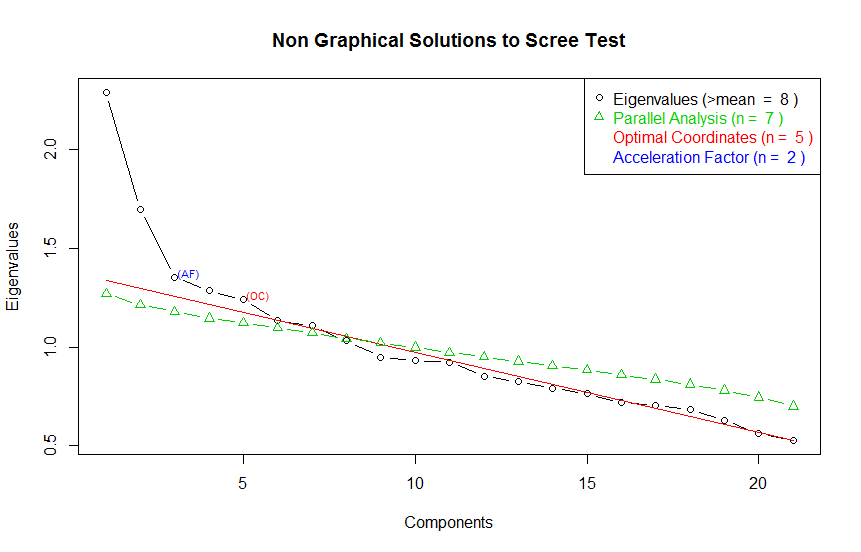I'd first ask if your goal is simply dimensionality reduction or the identification of underlying latent variables. If the former, then PCA is appropriate; however, if the latter, then you should switch to exploratory factor analysis (EFA) which is different from PCA [1] [2].
In PCA for dimensionality reduction, it is common to retain the number of PCs that captures some arbitrary percentage of the variance in the original measures. Somewhere between 90 and 99% is common depending on how important parsimony is for your application. You can calculate the amount of variance explained by each number of PCs by examining the eigenvalue output.
In EFA for latent variable analysis, it is common to use "parallel analysis" and "scree plots" to determine how many factors to retain. Parallel analysis basically shows how many factors would be found "by chance" in random data with a similar distribution to your data. Scree plots show how much variance is captured by each additional factor that is retained. You can see where the scree plot for your data crosses or meets the parallel analysis plot.
You, of course, also want to consider theory when choosing a number of factors to retain. In the example below, although the Eigenvalues line crosses the Parallel Analysis line at 6 factors, theory in my area better supports 5 factors. Additionally, examining the factor loadings on the sixth factor confirmed that it was more of a "garbage" factor that captured residual variance more than meaningful variance. So I made the decision to retain 5 factors.

An old but helpful article on EFA is:
Fabrigar, L. R., Wegener, D. T., MacCallum, R. C., & Strahan, E. J. (1999).
Evaluating the use of exploratory factor analysis in psychological research.
Psychological Methods, 4(3), 272–299.
Information on doing PCA or EFA in R can be found:
http://www.statmethods.net/advstats/factor.html


